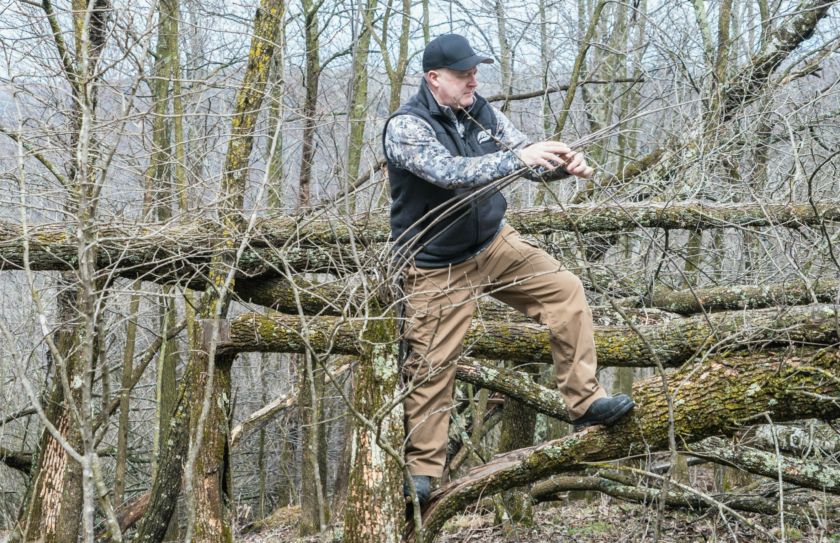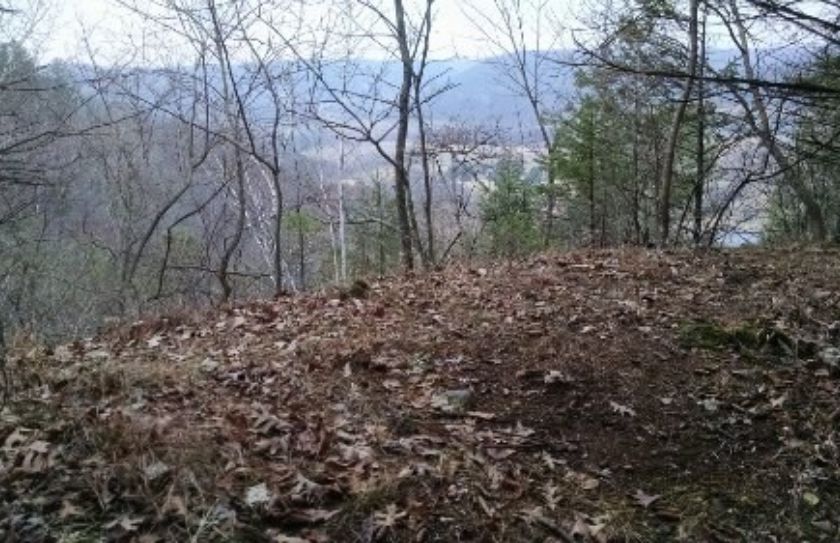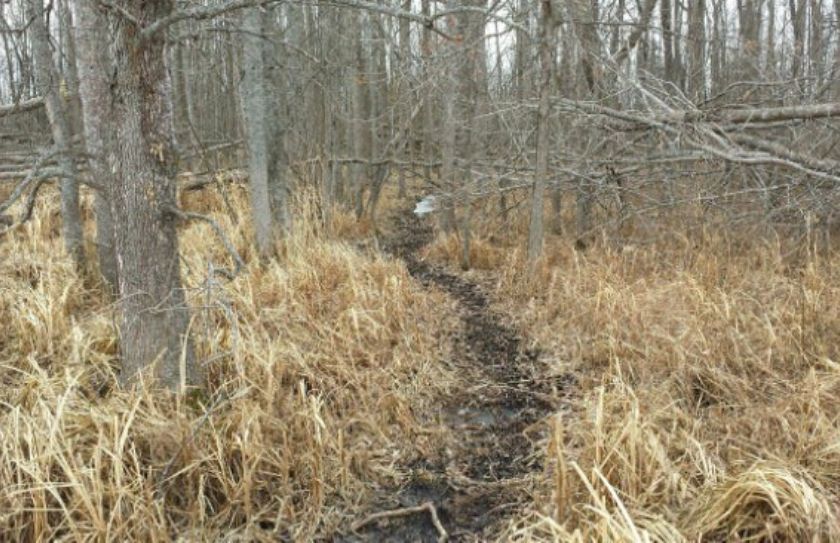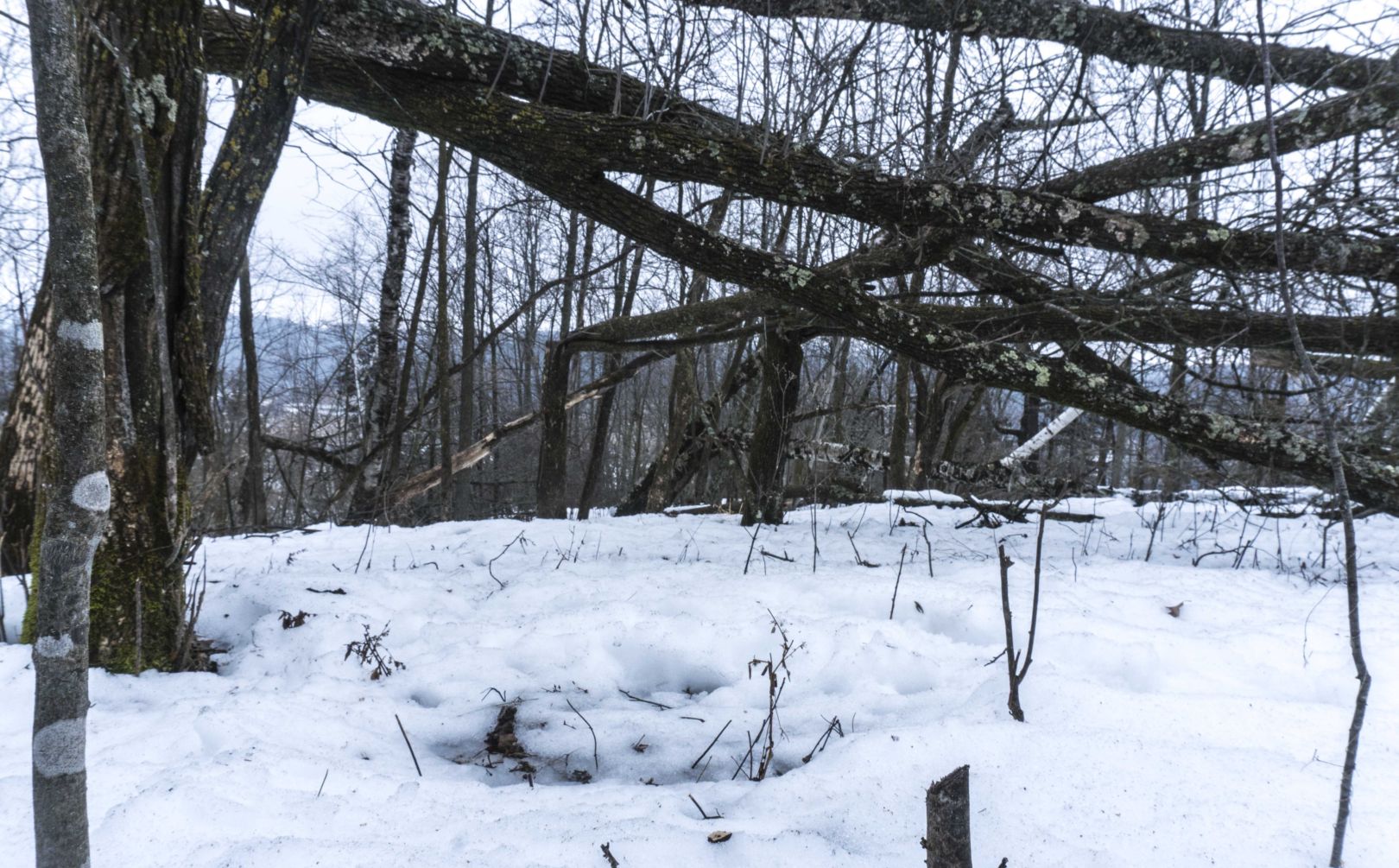
Would you like to make the most out of your hard-earned deer habitat improvement time? Then now is the time for you to learn about the deer bedding canopy myth! Creating deer bedding areas has been a hot topic for many years, however, not all bedding areas are created equal.
After touring the North 1/2 of the country scouting over 600 parcels for clients during the past 13 habitat seasons, you can only imagine the number of deer bedding creations that I have witnessed! From the completely ineffective to the incredibly awesome, and all forms in between, I have most likely seen it all. What I have learned from these experiences more than anything along the way, is that unfortunately, the deer bedding canopy is one of the greatest habitat myths ever created.
I know this will ruffle some feathers, but with the level of experience that I have, I want to make sure that you can make a highly informed decision about the use of your time. Why? Because of if you are like me, your time is highly valuable and in limited supply. Even as a full time whitetail professional who has a small team of individuals created to deliver whitetail content, whitetail parcel designs and whitetail habitat improvements for both our WHS and client parcels, I still can't afford to actually waste my time. Afterall, my whitetail goals are simple: Create the most attractive habitat in the neighborhood, for the top whitetail herd in the neighborhood, for the best hunting opportunities in the neighborhood. To assist you in making sure that you use your time wisely when it comes to your deer bedding activities, I strongly urge you to consider avoiding the greatest deer bedding myths!
Top 10 Deer Bed Creation Time Wasters
Honestly, outside of making your bedding area too thick, there are very few ways to actually do it wrong. Here they are!
1-8. The Deer Bed Canopy
Deer bedding canopies do work, in my experience, in roughly 10% of the whitetail range. And that is the problem because, hunters are creating deer bedding canopies in 100% of the whitetail range. If you live in an area with moderate to high deer numbers, if the habitat in your area is made up of 80% or more in agricultural settings, and if the topography in your area is relatively flat, then bedding canopies may work for the local deer herd. However, the canopy alone does not create a bedding area that is useful for deer during the months of Fall and Winter.
9. High Hinge Cuts
Head high hinge cuts are not only fairly unsafe, but they also place both cover and browse above a whitetail's reach. By creating hinge cuts at waste or belly high, you can not only hide deer, but provide them with high quality daytime browse.
10. The Deer Bedding Log
Why are deer bedding logs needed in canopied bedding? Because all of the Critical Side Cover Needed for a great deer bed, has been taken to create the canopy. If a bedding area is created correctly - it doesn't need a bedding log! Deer prefer to relate to side cover when they bed in the form of downed trees, lots, brush piles, grass and weed edges, shrubs, tree trunks, rocks and topography. On dozens of parcels I have experienced, there was no side cover left after using the locations trees to form a bedding canopy. With no side cover, the bedding areas are not used, with the exception of for Summer shading. So, a log needs to be added. However, if the trees used to create the canopy were instead hinged to the outside or alongside the bedding area, a log is not needed. Why? Because adequate side cover had been provided.
*Check out the photo below. Other than the mock scrape vine hanging down and rope used to suspend the vine, there is absolutely no bedding canopy. However, the downed tree and high stem count growth adjacent to his position, created adequate bedding opportunity.
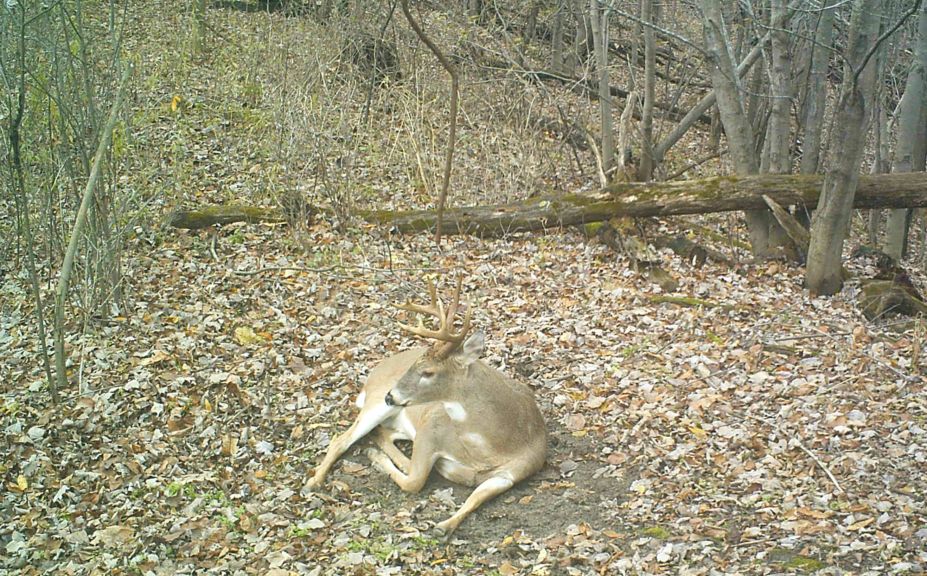
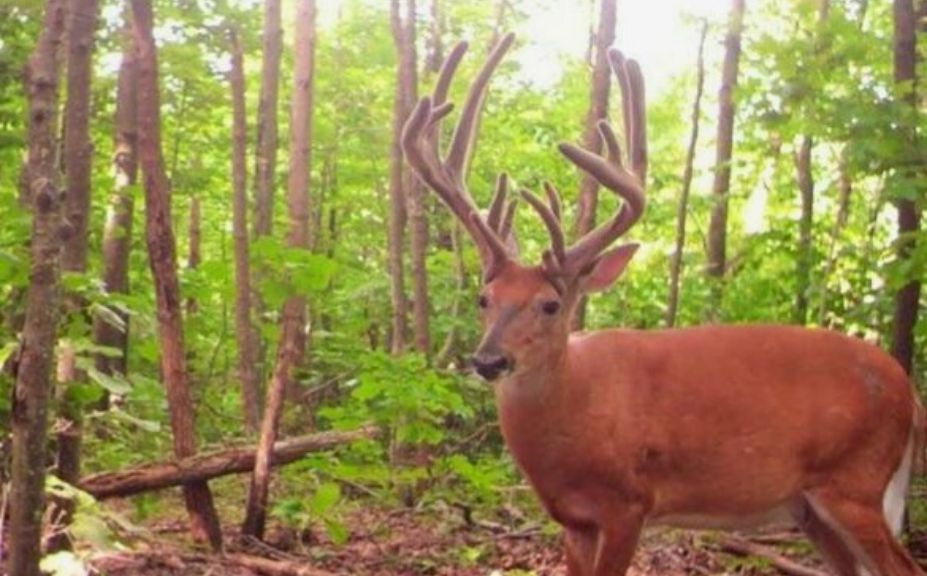
*A big, public land buck like the one above, has survived quite well without a man made bedding canopy. However, he can't survive without the necessary side cover that effectively hides him within his preferred bedding areas. Not to mention - can you imagine him crawling under a trampoline of bedding canopy with that tall of a rack?
A Great Bedding Area Does Not Need A Canopy
One thing is for certain: You can have a great bedding area without a canopy, but you can't have a great bedding area without side cover. I've used this analogy several times in writing, and dozens of times with my clients, but here it goes again!
Imagine a 160 acre, flat hay field with a 30' diameter pocket of 6-8" diameter red maple in the middle. One could hinge cut the entire pocket to create a trampoline of bedding opportunity, by hinge cutting the trees to the inside of the circle of trees. However, a hunter could still see from one fencerow to the next, thru the "bedding area". Deer would not use the bedding area and the canopy alone did not create a bedding area.
Now, imagine that the outside 2 rows of red maple were hinge cut to the outside - and only to the outside. What are you left with? A circle of side cover, not only effectively screening any deer on the inside, but providing daytime browse to the deer on the inside as well. This process, creates a bedding area even though the inner portion is open to the sky. Folks, deer do not need to hide from airplanes and birds, which is why you can have a great bedding area without a canopy, but not a great bedding area without side cover.
The Bedding Area Balance
While deer in regions where cover is available in 20% or less of the landscape may satisfactorily relate to a deer bedding canopy, deer in regions that feature 20-40% cover or more, typically will not. Why is this? Because they don't have to.
Deer crave their space, when they can find it, and depending on where they reside, they are used to it. While it may be appropriate to attempt to pile a large number of deer within a small number of acres in a Southern MI cover-less agricultural region. That is not the case in the majority of the whitetail range. As the number of Deer decrease within a given area and the amount of cover goes up, don't be surprised if deer strictly avoid any form of confinement. That includes the closing proximity to side cover, and of course any form of man made bedding canopy.
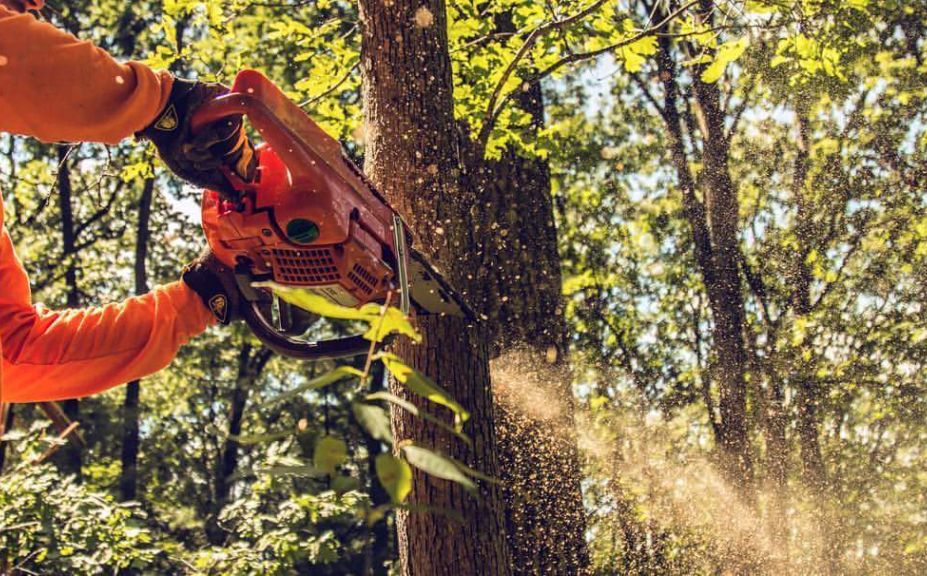
In The Time It Takes To Create A Bedding Canopy...
On various client parcels, I have experienced 4 or fewer bedding canopies that took an entire day to create, for the landowner who paid $1500 or more to have completed. While the cost may have been appropriate for the amount of work completed, there have been two common problems: Lack of deer use and a total acreage of habitat improvement covering less than 1 acre in size. When completed correctly, a bedding area created for side cover and immediate impact, can total 5 to 10 acres or more of cutting in a single day, by an experienced habitat specialist.
The bottom line? A bedding canopy of tie downs and hinge cuts takes time - a lot of time! Keep following our WHS blogs and videos to make sure that you are getting the most for your time, when it comes to creating highly effective, large bedding habitats for deer!
*A competent bedding habitat specialist will understand the use of a bedding canopy, and will have the experience to maximize their time for you, to create large, appropriate, high quality bedding areas quickly. Make sure to check out how my WHS Turnkey Habitats partner, Ross Fernandez, can skillfully turn your WHS design into reality, across the entire north 1/2 of the country.
Conclusion
It may seem impossible in some circles, but believe it or not, Millions of bucks bed across the whitetail range every single year, without deer bed canopies. Even mature bucks! This topic is near and dear to my heart, because even just this week I have witnessed client lands where bedding areas have been made, without any Fall or Winter use. However, these landowners have not been alone, because I have witnessed the same results in nearly every State within the North 1/2 of the whitetail range. From bedding canopies that took thousands of dollars to create by resource professionals to hunters devoting their hard earned hours of habitat time to the process, the failure rate is just too high to keep silent.
My job as a whitetail habitat professional is to educate and in the process of education, to save landowners time and money. Deer canopies, bedding logs and high hinge cuts top the list, for ineffective habitat practices that you can eliminate, so that you can maximize your hard earned hours, dollars or both, when creating your ultimate dream whitetail herd, habitat and hunting parcel.
